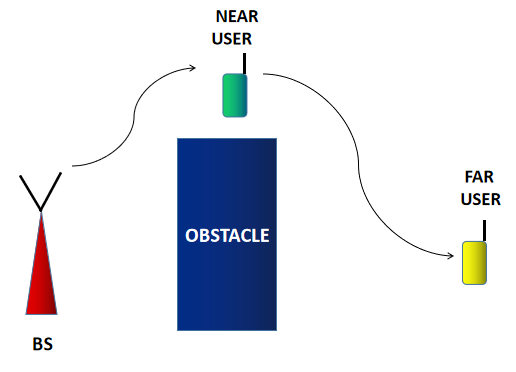MIMO - NOMA

NOMA is a versatile technology because it can be combined with lots of other techniques like cooperative communication, SWIPT, MIMO etc. We already discussed the intersection of NOMA with cooperative and SWIPT networks . In this post, let's see how NOMA works in a simple MIMO network Download the MATLAB code here System model Consider a 2 x 1 downlink MIMO system as shown in Fig. 1. Let $d_1$ and $d_2$ denote the distances of U1 and U2 respectively from the MIMO transmitter. Here, we assume $d_1 \gt d_2$. That is, U1 is the weak user and U2 is the strong user. We know that MIMO can be used for either spatial multiplexing (increase achievable rate) or diversity gain (decrease BER). Here, we are using MIMO for achieving diversity gain. Hence, both the transmit antennas 1 and 2 transmit the same information. Let $x_1$ and $x_2$ denote the information intended for U1 and U2. Following the notation conventions of MIMO, let $h_{rt




